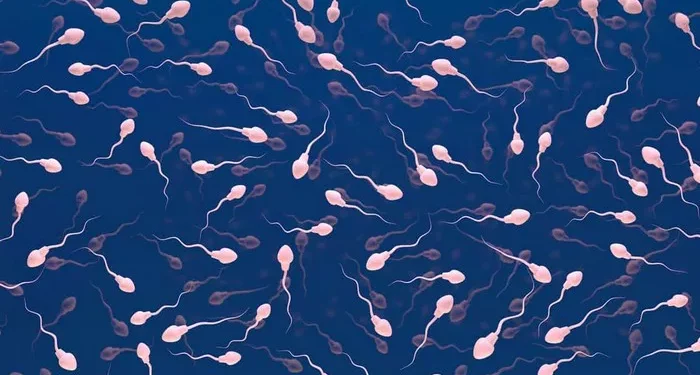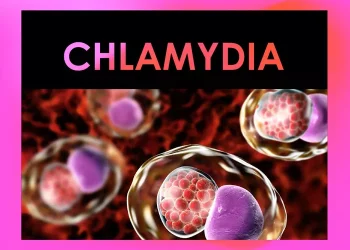Azoospermia, a condition characterized by the absence of sperm in the ejaculate, affects approximately 1% of all men and 10-15% of infertile men. This condition is classified into two main types: obstructive azoospermia (OA) and non-obstructive azoospermia (NOA). Obstructive azoospermia occurs when there is a physical blockage in the male reproductive tract preventing the transport of sperm. Non-obstructive azoospermia, on the other hand, is a result of impaired or absent sperm production within the testes.
Hormones play a crucial role in the regulation of sperm production. The intricate balance of hormonal signals, particularly within the hypothalamic-pituitary-gonadal (HPG) axis, is essential for spermatogenesis. Hormone treatment, particularly for non-obstructive azoospermia, offers a promising avenue for restoring fertility in affected men. By addressing hormonal imbalances, these treatments aim to stimulate sperm production and potentially allow for natural conception or assisted reproductive techniques.
What is Azoospermia
Non-obstructive azoospermia is a complex condition often caused by a variety of underlying issues that disrupt normal sperm production. The causes can be diverse, including genetic factors, hormonal imbalances, and anatomical abnormalities. Understanding these causes is crucial for developing effective treatment strategies.
Common Causes of Non-Obstructive Azoospermia
Hormonal imbalances: Dysregulation in the levels of hormones such as Follicle-Stimulating Hormone (FSH), Luteinizing Hormone (LH), and testosterone can impair spermatogenesis.
Genetic factors: Conditions such as Klinefelter syndrome (47,XXY karyotype), Y chromosome microdeletions, and mutations in genes involved in spermatogenesis can lead to azoospermia.
Undescended testicles (cryptorchidism): This condition, where one or both testicles fail to descend into the scrotum, can lead to impaired sperm production if not corrected early in life.
Testicular failure: Primary testicular failure, where the testes fail to produce sperm despite adequate hormonal stimulation, can result from factors like chemotherapy, radiation, infections, or trauma.
Varicocele: An abnormal enlargement of the venous plexus in the scrotum that can disrupt normal testicular function and sperm production.
Idiopathic causes: In some cases, the cause of non-obstructive azoospermia remains unknown despite thorough investigation.
Hormonal Orchestration of Sperm Production
Spermatogenesis, the process of sperm production, is tightly regulated by the hypothalamic-pituitary-gonadal (HPG) axis. This axis involves a complex interplay of hormones that ensure the proper development and function of the male reproductive system.
Hypothalamic-Pituitary-Gonadal (HPG) Axis
The HPG axis begins with the hypothalamus, a region in the brain that secretes gonadotropin-releasing hormone (GnRH). GnRH stimulates the pituitary gland to release two critical hormones: Follicle-Stimulating Hormone (FSH) and Luteinizing Hormone (LH).
Follicle-Stimulating Hormone (FSH): FSH is essential for stimulating the Sertoli cells in the testes, which provide support and nourishment to developing sperm cells. FSH promotes the proliferation and differentiation of these cells, crucial steps in spermatogenesis.
Luteinizing Hormone (LH): LH stimulates the Leydig cells in the testes to produce testosterone. Testosterone, the primary male sex hormone, is vital for the development of secondary sexual characteristics and the maintenance of spermatogenesis.
Testosterone: Testosterone acts on the Sertoli cells to support the final stages of sperm maturation. Adequate levels of testosterone are necessary for the completion of spermatogenesis and the production of viable sperm.
Treatment with Hormones
Hormone treatment for non-obstructive azoospermia aims to restore the hormonal balance necessary for sperm production. Various hormones and medications can be used to stimulate spermatogenesis, each with specific mechanisms of action.
Follicle-Stimulating Hormone (FSH)
FSH therapy involves administering exogenous FSH to stimulate the Sertoli cells directly. This treatment is particularly effective in men with hypogonadotropic hypogonadism, a condition characterized by low levels of FSH and LH due to hypothalamic or pituitary dysfunction.
See also: Azoospermia You Need to Know
Mechanism: FSH binds to receptors on the Sertoli cells, promoting their proliferation and supporting the early stages of spermatogenesis.
Administration: FSH is typically administered via subcutaneous injections, often in combination with human chorionic gonadotropin (hCG) to stimulate endogenous testosterone production.
Human Chorionic Gonadotropin (HCG)
HCG, a hormone structurally similar to LH, is used to stimulate the Leydig cells in the testes to produce testosterone. HCG therapy is often combined with FSH therapy to provide a synergistic effect on spermatogenesis.
Mechanism: HCG binds to LH receptors on the Leydig cells, increasing testosterone production, which in turn supports the later stages of spermatogenesis.
Administration: HCG is administered via subcutaneous or intramuscular injections, with dosages adjusted based on testosterone levels and patient response.
Clomiphene Citrate
Clomiphene citrate is an oral medication commonly used to treat male infertility. It acts as a selective estrogen receptor modulator (SERM), increasing the levels of endogenous FSH and LH.
Mechanism: Clomiphene blocks estrogen receptors in the hypothalamus and pituitary gland, reducing negative feedback and thereby increasing the release of GnRH, FSH, and LH.
Administration: Clomiphene is taken orally, typically in daily doses, with the regimen tailored to the patient’s hormonal profile and response.
Aromatase Inhibitors (Letrozole, Anastrozole)
Aromatase inhibitors, such as letrozole and anastrozole, reduce the conversion of testosterone to estrogen. Lowering estrogen levels helps to alleviate negative feedback on the hypothalamus and pituitary, thereby increasing the production of GnRH, FSH, and LH.
Mechanism: By inhibiting the aromatase enzyme, these medications reduce estrogen levels, leading to an increase in the secretion of FSH and LH.
Administration: Aromatase inhibitors are taken orally, with dosages adjusted based on the patient’s hormonal response and fertility goals.
Success Rates and Considerations
The success rates of hormone therapy for non-obstructive azoospermia vary depending on several factors, including the underlying cause of the condition, the patient’s baseline hormone levels, and individual response to treatment.
Success Rates
FSH and HCG Therapy: Studies have shown that combined FSH and hCG therapy can lead to spermatogenesis in a significant proportion of men with hypogonadotropic hypogonadism. Success rates can vary, with some studies reporting sperm production in up to 80% of treated men.
Clomiphene Citrate: Clomiphene citrate has been effective in increasing sperm counts and improving fertility outcomes in men with idiopathic infertility or secondary hypogonadism. Success rates vary widely, with some studies showing improvement in 40-60% of patients.
Aromatase Inhibitors: Aromatase inhibitors have shown promise in treating men with elevated estrogen levels or low testosterone-to-estrogen ratios. Success rates can vary, with some studies indicating improved sperm parameters and pregnancy rates in 30-50% of treated men.
Factors Affecting Success Rates
Underlying cause: The specific cause of non-obstructive azoospermia plays a critical role in determining the effectiveness of hormone therapy. Men with hypogonadotropic hypogonadism or reversible hormonal imbalances tend to have better outcomes.
Duration of therapy: Hormone therapy often requires several months to achieve significant results, and the duration of treatment can impact success rates.
Baseline hormone levels: Patients with severely low baseline levels of FSH, LH, or testosterone may require longer or more intensive therapy to achieve spermatogenesis.
Individual response: Genetic factors, overall health, and adherence to treatment regimens can influence individual responses to hormone therapy.
See also: Varicocele and Azoospermia
Potential Side Effects
Hormone therapy, while generally well-tolerated, can be associated with side effects. It is essential for patients to be aware of these potential risks and to discuss them with their healthcare provider.
FSH and HCG Therapy: Common side effects include injection site reactions, gynecomastia (enlarged breast tissue), and mood changes. In rare cases, high doses can lead to overstimulation of the testes, resulting in testicular pain or enlargement.
Clomiphene Citrate: Side effects may include visual disturbances, mood swings, and gastrointestinal symptoms. Long-term use may be associated with an increased risk of cardiovascular events.
Aromatase Inhibitors: These medications can cause joint pain, hot flashes, and decreased bone density with prolonged use.
Conclusion
Hormone therapy offers a promising path to fertility for men with non-obstructive azoospermia. By addressing hormonal imbalances and stimulating spermatogenesis, these treatments can improve the chances of achieving pregnancy, either naturally or through assisted reproductive techniques. However, the success of hormone therapy depends on a variety of factors, including the underlying cause of azoospermia and individual patient response.
It is crucial for men with azoospermia to consult a urologist or infertility specialist to obtain an accurate diagnosis and develop a tailored treatment plan. With the right approach and careful monitoring, hormone therapy can significantly enhance fertility outcomes and offer hope to many couples struggling with infertility.
Related Topics:
The Treatment Options of Severe Asthenoteratozoosperm



























